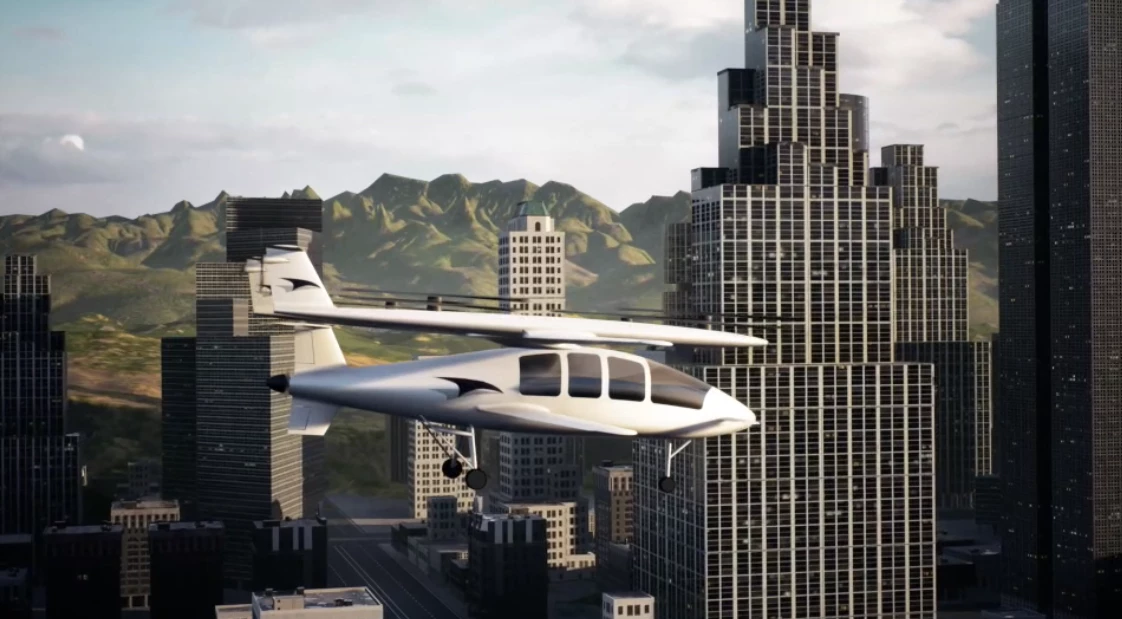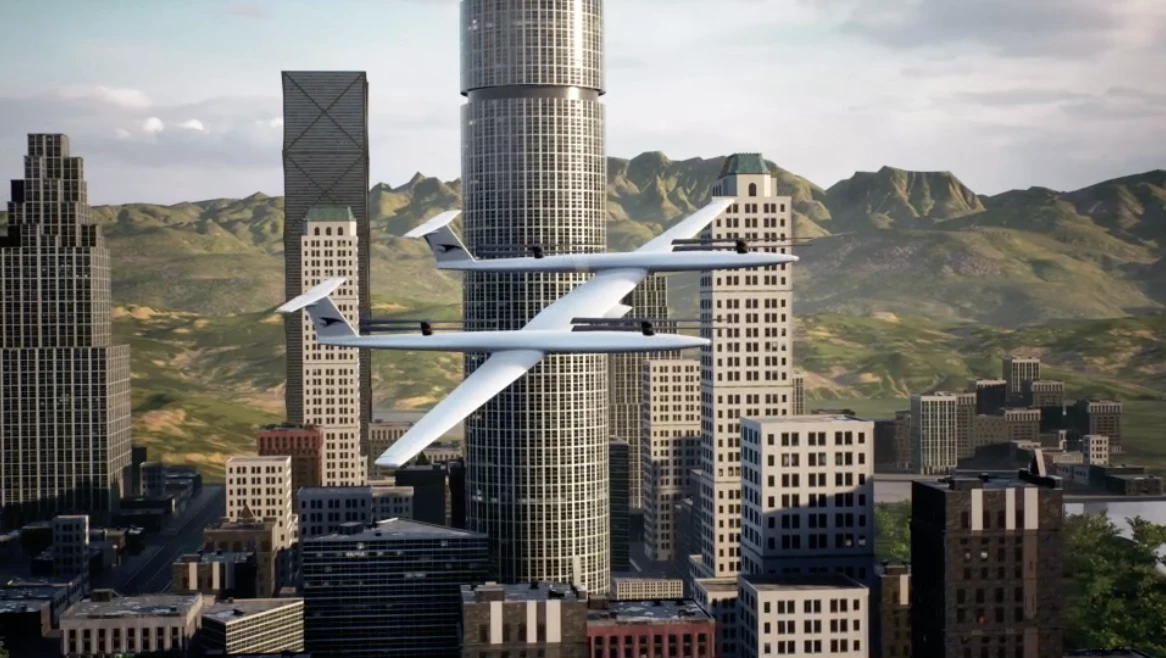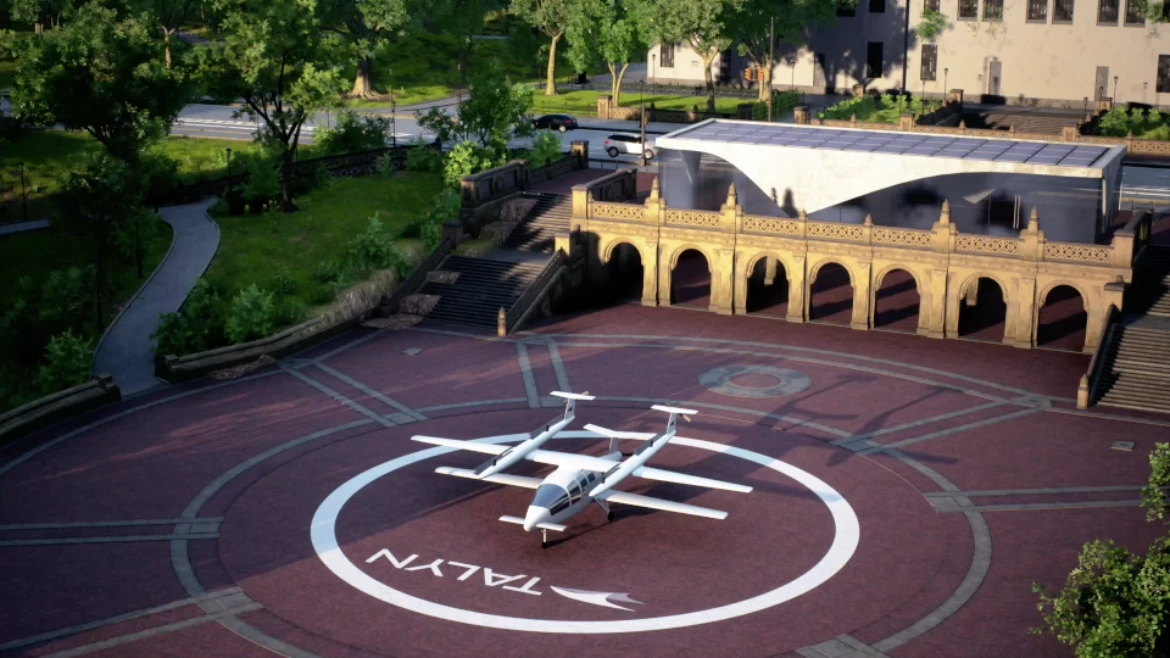The biggest problem with electric VTOL aircraft is the VTOL system. It's a pain. The world-changing convenience of vertical lift systems comes with a high price tag: they weigh a heap, particularly because VTOL sucks up so much energy that you need a huge battery.
And they're a pain once you're flying horizontally, too; vertical propeller arrangements add drag to your airframe design, reducing point-to-point range and limiting your top speed. Joby Aviation solves this problem by tilting all its rotors forward – but if you were designing a plane just for the horizontal phase of flight, you'd only use one prop for optimal efficiency. Others fold their props up, or duct them into the wings and cover them over, but Talyn Air offers a different solution altogether that flat-out ditches them when they're not needed.
Founded by a pair of ex-SpaceX Falcon 9 engineers, one of whom also worked on prototype airplanes for Scaled Composites, Talyn proposes a radically new approach to the eVTOL problem: a simple, high-speed, long-range electric plane that gains eVTOL capabilities thanks to a detachable vertical lift platform.
The idea is simple enough: a VTOL system that's only there when you need it. Talyn's Lift vehicle, with its eight large rotors mounted in four coaxial pairs, attaches to the top of the Cruise vehicle for takeoff. With its own battery reserve, it lifts the Cruise vehicle up and gets it up to a speed where the Cruise vehicle's wing and pusher prop can take over, whereupon the two aircraft separate and the Lift vehicle flies back to base.

There, it's free to recharge the large amount of energy it's just spent while the Cruise vehicle flies on, carrying five passengers over 300 miles at 200 mph (322 km/h). For reference, that's the same top speed Joby is promising, but with double the range. At the other end, you can either land the Cruise vehicle like the fixed-wing plane it is or, if you're headed to another Talyn vertiport, you can rendezvous with another VTOL Lift vehicle to take you down on a landing pad.
In order to chase and hook up with the Cruise plane, the Lift vehicles have their own glider-style wings and a pair of pusher props to get them up to speed. It's a clever way of putting the Cruise vehicle in the air and getting it up to speed with a 100 percent full battery, as well as giving the Lift vehicles extra time on the chargers to recoup the big energy hit of a vertical takeoff or landing operation.
Of course, this approach has its own challenges, and some beefy ones at that. The rendezvous operation will be difficult. The link between the two vehicles will need to be simple enough that it can attach mid-air, yet strong enough to lift an electric plane and five people off the ground, and also aerodynamically negligible. The flight control dynamics of the transition between vertical and horizontal flight here will be a lot more complex.

Not to mention, one of the key hurdles for any eVTOL startup – the certification process – is going to be a lot harder for Talyn than anyone else. That's not just because it'll need to certify two aircraft instead of one, including completely unique mid-air docking and release sequences, but also because the Lift vehicle will have to be autonomous. Right now, every other eVTOL startup is planning to hit the market with a pilot on board and eventually move to autonomous flight once the sluggish bulk of international aviation authorities have worked out how to allow it.
So Talyn has chosen a highly technical and challenging path to market – but at the end of the process, if it gets built it'll offer a fairly compelling blend of eVTOL convenience and flexibility with impressive inter-city range nobody else in the space can touch without resorting to dinosaur-burning hybrid systems or hydrogen fuel cells. And there are surely other benefits as well; that detachable lift system could just as easily shift a pallet of cargo a short distance in its downtime, for example.
A fascinating approach for sure, and we look forward to learning more.
Source: Talyn Air








